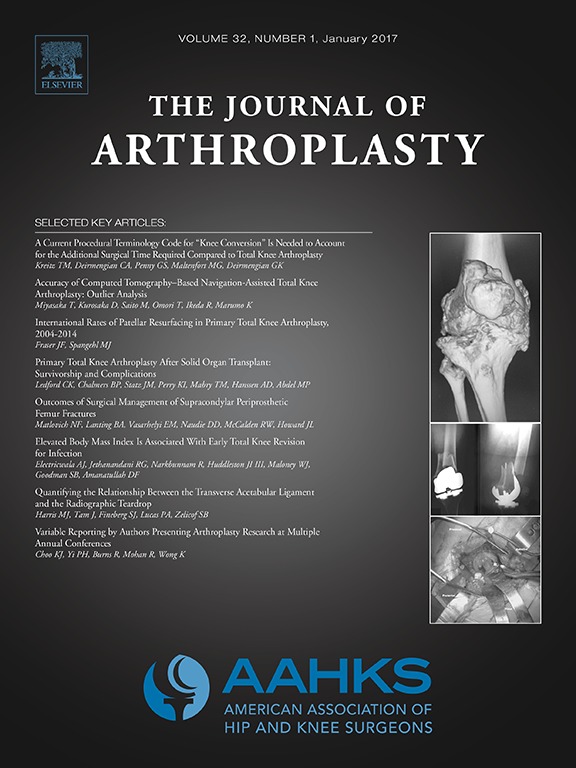
ARTHROPLASTY
Posterior stabilized versus cruciate-substituting total knee arthroplasty at 2years
J Arthroplasty. 2014 Sep;29(9 Suppl):179-81.111 patients eligible for primary total knee arthroplasty (TKA) were randomly allocated to receive either a posterior stablized (PS) post/cam tibial insert or a more congruent cruciate-substituting (CS) insert. This study aimed to compare the clinical outcomes during the postoperative period and radiographic and functional outcomes at a minimum 2-year follow-up between the two devices. At 2-years the PS and CS groups demonstrated equivalent functional and radiographic outcomes. Tourniquet time was significantly shorter in the CS group. Intraoperative estimated blood loss, hemoglobin, and units of blood transfused were not significantly different, however, in a subgroup analysis of males, the CS group required significantly fewer units of blood transfused.
Unlock the full ACE Report
You have access to {0} free articles per month.Click below to unlock and view this {1}
Unlock NowCritical appraisals of the latest, high-impact randomized controlled trials and systematic reviews in orthopaedics
Access to OrthoEvidence podcast content, including collaborations with the Journal of Bone and Joint Surgery, interviews with internationally recognized surgeons, and roundtable discussions on orthopaedic news and topics
Subscription to The Pulse, a twice-weekly evidence-based newsletter designed to help you make better clinical decisions
Exclusive access to original content articles, including in-house systematic reviews, and articles on health research methods and hot orthopaedic topics
Or upgrade today and gain access to all OrthoEvidence content for just $1.99 per week.
Already have an account? Log in


Subscribe to "The Pulse"
Evidence-Based Orthopaedics direct to your inbox.
{0} of {1} free articles
Become an OrthoEvidence Premium Member. Expand your perspective with high-quality evidence.
Upgrade Now












































































